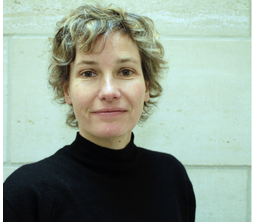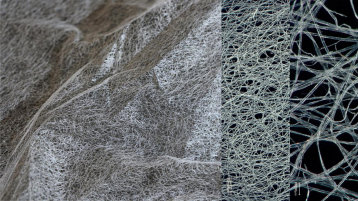The contribution of multiphoton microscopy to our knowledge of parchments
Vortrag Ringvorlesung , 29. April 2025

Multiphoton microscopy (NLO) is a non-invasive technique for heritage analysis, especially for parchments. It visualises collagen fibres via second harmonic generation (SHG) and detects fluorescent materials like fat or gelatine. Applied to historical parchments, it reveals structural changes from aging and treatments, providing insights into manufacturing, degradation, and conservation.
Auf einen Blick
Ringvorlesung Hybrid
Vortrag RingvorlesungWann?
- 29. April 2025
- 17.00 Uhr bis 18.30 Uhr
-
in meinen Kalender übertragen
BEGIN:VCALENDAR VERSION:2.0 PRODID:-//hacksw/handcal//NONSGML v1.0//EN CALSCALE:GREGORIAN BEGIN:VTIMEZONE TZID:EUROPE/BERLIN BEGIN:DAYLIGHT TZOFFSETFROM:+0100 TZOFFSETTO:+0200 TZNAME:CEST DTSTART:19700329T020000 RRULE:FREQ=YEARLY;BYMONTH=3;BYDAY=-1SU END:DAYLIGHT BEGIN:STANDARD TZOFFSETFROM:+0200 TZOFFSETTO:+0100 TZNAME:CET DTSTART:19701025T030000 RRULE:FREQ=YEARLY;BYMONTH=10;BYDAY=-1SU END:STANDARD END:VTIMEZONE BEGIN:VEVENT LOCATION:TH Köln\, Campus Südstadt Ubierring 40\, 50678 Köln Raum 11 Oder Online per Zoom. Den Link finden Sie im Programmflyer DESCRIPTION: SUMMARY:Ringvorlesung Hybrid DTSTART;TZID=EUROPE/BERLIN:20250429T170000 DTEND;TZID=EUROPE/BERLIN:20250429T183000 DTSTAMP:20250422T075642 UID:68072f9a50fe4 END:VEVENT END:VCALENDAR
Wo?
TH Köln, Campus Südstadt
Ubierring 40, 50678 Köln
Raum 11
Oder Online per Zoom.
Den Link finden Sie im Programmflyer
Kosten
kostenfrei
Veranstaltungsreihe
Ringvorlesung des CICS
(Sommersemester 2025)
ReferentIn
Laurianne Robinet, Giulia Galante, Sylvie Heu-Thao, Marie-Claire Schanne Klein, Gaël Latour
Anmeldung
nicht notwendig
Veranstalter
CICS - Cologne Institute of Conservation Sciences
Institut für Restaurierungs- und Konservierungswissenschaft
Weitere Informationen
Im Rahmen der Ringvorlesung im Sommersemester 2025 präsentieren wir verschiedene aktuelle Forschungsprojekte. Die Vorträge finden Hybrid oder Online statt und richten sich an Studierende, Fachkolleg*innen und all jene, die sich für die Restaurierung und Konservierung von Kulturgütern interessieren.
Multiphoton microscopy, also called non-linear optical (NLO) microscopy, is an optical imaging technique widely developed in the biomedical field, but relatively new and promising for the non-invasive analysis of heritage materials. This technique is particularly efficient to investigate skin-based materials at the microscopic scale, especially parchments, since it can visualise the collagen fibre organisation within the material from the collection of the second harmonic generation (SHG) signal. The simultaneous collection of fluorescence signals by the same NLO microscope can also reveal the presence of interacting fluorescent materials such as fat, elastin and keratin, remaining from the skin preparation, or gelatin, resulting from collagen degradation. When applied to historical parchments and manuscripts, NLO microscopy sometimes reveals very different morphology of collagen fibres and signals collected, likely associated to various factors in the life of the object. Based on experiments set up on modern parchments and measurements made on historical objects, we will demonstrate how the technique can contribute to our knowledge on the manufacturing, the degradation and the impact of some restoration treatment of parchments.


